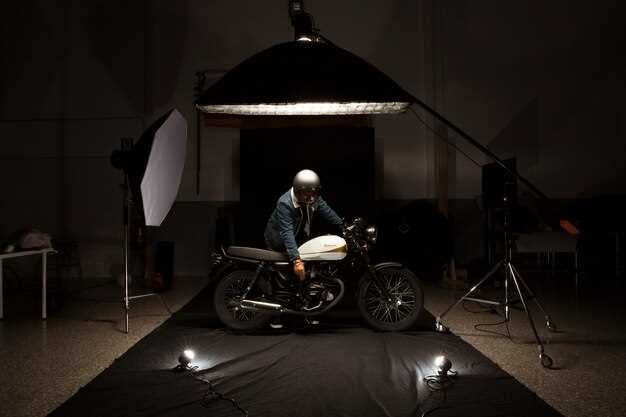
Classic auto exhibitions are more than just a showcase of vintage cars; they offer a captivating glimpse into the history and evolution of automotive design. At these exhibitions, enthusiasts and collectors gather to witness not only the aesthetic beauty of classic automobiles but also the intricate engineering details that define each vehicle. Every car on display tells a story, reflecting the technological advancements and cultural shifts of its time.
The auto industry has undergone significant transformations over the decades, and classic exhibitions serve as a time capsule, preserving the essence of iconic models. Visitors can delve into the craftsmanship that went into each piece, from the gleaming chrome accents to the finely tuned engines. These hidden details often go unnoticed by the casual observer but hold immense value for collectors and enthusiasts alike.
Additionally, exhibitions often feature educational sessions and expert panels that provide deeper insights into automotive heritage. Attendees can learn about the restoration processes, the significance of specific features, and the impact of design trends on modern vehicles. By taking the time to explore these hidden aspects, visitors enhance their appreciation for the classic cars that have shaped the auto landscape we know today.
Uncovering the Unique Features of Iconic Vehicles

Classic auto exhibitions serve as a vibrant showcase of automotive history, where enthusiasts gather to admire vehicles that have become symbols of innovation and craftsmanship. These exhibitions offer insights into the distinct features that define iconic vehicles, from their engineering marvels to their aesthetic designs.
One prominent element that stands out is the engineering ingenuity behind these iconic vehicles. Take, for instance, the Ford Model T, which revolutionized mass production with its assembly line technique. This innovation not only made automobiles more accessible but also set the stage for future industrial manufacturing. Similarly, the Chevrolet Corvette’s use of lightweight materials and aerodynamic shapes has influenced sports car design for decades, showcasing how functionality blends with style.
Aesthetics also play a critical role in making vehicles iconic. The curvaceous lines of the Jaguar E-Type exemplify elegance, drawing admiration for its beauty and performance. The craftsmanship involved in creating such designs is often highlighted during exhibitions, providing visitors with the opportunity to appreciate the delicate balance between form and function.
Another unique feature often explored in these settings is the technology embedded within these vehicles. From the early innovations of the Volkswagen Beetle’s air-cooled engine to the sophisticated electronics found in modern classics like the Tesla Roadster, exhibitions reveal the technological evolution that has shaped our driving experiences.
Auto shows not only celebrate the past but also serve as a platform for automotive history to be shared and understood. As collectors and fans interact with the vehicles on display, they gain insights into what makes these icons stand the test of time, from their rich heritage to the passion behind their creation. This immersive experience allows attendees to leave with a deeper appreciation for the artistry and engineering that define the automotive world.
Understanding the Curatorial Approaches to Classic Auto Displays

The curatorial approach to classic auto exhibitions plays a crucial role in how vehicles are presented and perceived by the audience. A well-designed display can enhance the storytelling aspect of the exhibition, allowing visitors to connect emotionally with the cars on show. Curators must consider various aspects, including thematic organization, historical context, and sensory engagement.
Thematic organization involves grouping automobiles based on specific motifs such as design eras, technological advancements, or cultural significance. This method not only guides the narrative of the exhibition but also allows visitors to appreciate the evolution of automotive design and technology over time. For example, an exhibition may focus on the impact of automotive engineering in the mid-20th century, showcasing iconic vehicles that represent innovation during that period.
Historical context is vital in framing the story behind each vehicle. Curators often conduct extensive research to present informative labels that detail the origins, manufacturers, and cultural relevance of the showcased autos. By incorporating multimedia elements such as photographs, documentaries, and oral histories, exhibitions can create a more immersive experience that brings the historical significance of the cars to life.
Sensory engagement is another important aspect of curatorial approaches. For classic auto shows, the aesthetic appeal of vehicles needs to be complemented by the overall atmosphere of the exhibition space. Lighting, soundscapes, and even interactive exhibits can enhance the visitor’s experience, making them feel as though they are stepping into a specific time and place in automotive history. By engaging multiple senses, exhibitors can foster a deeper appreciation for the craftsmanship and artistry involved in classic automobiles.
Ultimately, successful classic auto displays are the result of thoughtful curation that balances educational content with visual and emotional engagement. By understanding and implementing diverse curatorial approaches, exhibitions can celebrate the rich legacy of automotive history while captivating the imaginations of diverse audiences.
Engaging with the Audience: How to Maximize Visitor Experience
Maximizing visitor experience at auto exhibitions requires a focused strategy that engages attendees and provides valuable insights. First, understanding the audience’s interests is critical. Tailoring content that resonates with different demographics and preferences can significantly enhance their overall experience.
Interactive displays are a powerful tool in this regard. By incorporating virtual reality (VR) or augmented reality (AR), exhibitions can create immersive environments that allow visitors to experience vehicles in novel ways. This not only captures attention but also encourages longer engagement with the exhibition.
Education is another vital component. Hosting workshops or panel discussions featuring industry experts can deepen the audience’s appreciation for automotive technology. This allows visitors to gain insights into the history, design, and innovation within the auto industry, transforming passive observation into active learning.
Utilizing social media can amplify the exhibition’s reach. Encouraging visitors to share their experiences online creates a sense of community and invites more attendees in future years. Engaging with posts and comments further nurtures this connection, making it a continuous dialogue rather than a one-time interaction.
Finally, feedback mechanisms are essential. Surveys or interactive kiosks can provide immediate insights into visitor preferences and experiences. This feedback loop not only improves current exhibitions but also informs planning for future events, ensuring that each auto exhibition evolves to meet the needs of its audience.


